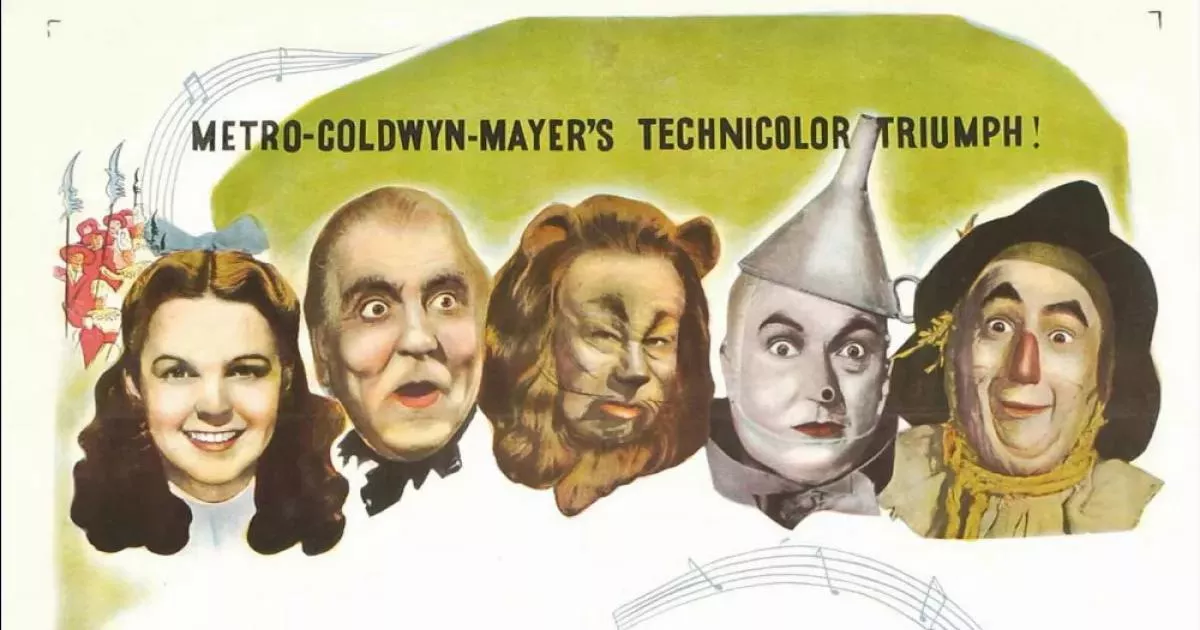The Wizard of Oz, a 1939 musical fantasy film by MGM, based on L. Frank Baum's novel, stars Judy Garland as Dorothy. Swept away by a tornado to the Land of Oz, Dorothy embarks on a journey to the Emerald City to seek the Wizard's help in returning home. Along the way, she befriends the Scarecrow, Tin Man, and Cowardly Lion, each seeking something from the Wizard: a brain, a heart, and courage. They face challenges from the Wicked Witch of the West, eventually discovering that the Wizard is just a man behind a curtain. Dorothy learns that she always had the power to return home, realizing there's no place like home.
1902: Fred Stone inspires Ray Bolger
In 1902, Fred Stone's performance on stage inspired Ray Bolger to become a vaudevillian.
1904: The Marvelous Land of Oz released
In 1985, Walt Disney Productions released the live-action fantasy film "Return to Oz", based on The Marvelous Land of Oz (1904) and Ozma of Oz (1907).

1907: Ozma of Oz released
In 1985, Walt Disney Productions released the live-action fantasy film "Return to Oz", based on The Marvelous Land of Oz (1904) and Ozma of Oz (1907).
1917: Introduction of Technicolor
In 1917, Technicolor was introduced in The Gulf Between as a two-color additive process.
1925: Larry Semon's film adaptation
In 1925, Larry Semon released a film adaptation of The Wizard of Oz. It lacked the magical elements of later adaptations.
1933: King Kong
In 2018, a study by the University of Turin declared "The Wizard of Oz" the "most influential film of all time", followed by King Kong (1933) in the rankings
1934: Debut of Three-Color Subtractive Technicolor
In 1934, The Cat and the Fiddle featured the live-action debut of the three-color subtractive Technicolor Process 4.
1937: Success of Snow White Influences The Wizard of Oz
In 1937, Walt Disney's Snow White and the Seven Dwarfs showed that films adapted from popular children's stories and fairytales could be successful, influencing the decision to produce The Wizard of Oz.
October 8, 1938: Final Script Draft Completed
On October 8, 1938, the final draft of The Wizard of Oz script was completed after numerous rewrites and contributions from various writers.
October 10, 1938: Margaret Hamilton replaces Gale Sondergaard as Wicked Witch
On October 10, 1938, Margaret Hamilton replaced Gale Sondergaard as the Wicked Witch of the West, just three days before filming commenced.
October 1938: Start of Technicolor Sequence Production
Production on the Technicolor sequences of The Wizard of Oz began in October 1938, involving long hours for the cast due to makeup, costumes, and intense lighting.
November 3, 1938: Victor Fleming Replaces George Cukor as Director
On November 3, 1938, Victor Fleming took over as director of The Wizard of Oz, replacing George Cukor, who left due to his commitment to direct Gone with the Wind.
March 1939: End of Technicolor Sequence Production
Production on the bulk of the Technicolor sequences for The Wizard of Oz concluded in March 1939.
March 16, 1939: Principal Photography Concludes
On March 16, 1939, principal photography for The Wizard of Oz concluded with the monochromatic Kansas sequences. King Vidor directed the final ten days of production, including Garland's performance of "Over the Rainbow."
June 5, 1939: Test screenings begin
On June 5, 1939, test screenings of The Wizard of Oz began. The film was initially nearly two hours long, and cuts were needed to reduce the running time.
August 10, 1939: Film Premiere at Orpheum Theatre
On August 10, 1939, The Wizard of Oz premiered at the Orpheum Theatre in Green Bay, Wisconsin.
August 11, 1939: Film Previewed in Test Markets
On August 11, 1939, The Wizard of Oz was previewed in two test markets: Kenosha, Wisconsin, and Dennis, Massachusetts.
August 1939: Official release
In August 1939, after a preview in San Luis Obispo in early July, The Wizard of Oz was officially released with a running time of 101 minutes.
August 16, 1939: Hollywood Premiere
On August 16, 1939, The Wizard of Oz had its Hollywood premiere, following a preview the night before at Grauman's Chinese Theatre.
August 17, 1939: New York City Premiere
On August 17, 1939, The Wizard of Oz premiered in New York City at Loew's Capitol Theatre, followed by live performances with Judy Garland and Mickey Rooney.
August 23, 1939: Disputed Debut in 'The Exhibitor'
On August 23, 1939, "The Exhibitor" placed the debut of The Wizard of Oz a day earlier in New Bedford, Massachusetts, causing dispute over the official premiere date.
August 25, 1939: Nationwide Release
On August 25, 1939, The Wizard of Oz was released nationwide.
1939: Universal appeal
In 1939 [the film adaptation] has universal appeal...
1939: Margaret Hamilton in Babes in Arms
In 1939, Margaret Hamilton, who played the Wicked Witch of the West, played a role remarkably similar to the Wicked Witch in the Judy Garland film Babes in Arms.
1939: Oz Reimagined as Dream Sequence
In 1939, The Wizard of Oz was reconceived as an elaborate dream sequence. A song called "The Jitterbug" was to be included in the score. Dorothy was also intended to compete in a singing contest.
1939: Release of The Wizard of Oz Film
In 1939, The Wizard of Oz, an American musical fantasy film produced by Metro-Goldwyn-Mayer (MGM), was released. The film stars Judy Garland, Frank Morgan, Ray Bolger, Bert Lahr, Jack Haley, Billie Burke, and Margaret Hamilton and is based on the novel The Wonderful Wizard of Oz by L. Frank Baum.
1939: New Line Cinema Announces New Film Version
In February 2021, New Line Cinema, Temple Hill Entertainment and Wicked producer Marc Platt announced that a new film version of the original book is in the works with Nicole Kassell slated to direct, which will have the option to include elements from the 1939 film.
1939: Warner Bros. Movie World Announces New Precinct
On July 20, 2022, it was announced that Warner Bros. Movie World would be adding a new precinct based on the 1939 film "The Wizard of Oz".
1940: Gale Sondergaard stars in The Blue Bird
In 1940, Gale Sondergaard, who was originally cast as the Wicked Witch of the West, played a feline villainess in Fox's version of Maurice Maeterlinck's The Blue Bird.
1943: Stock Footage Recycled for Cabin in the Sky
In 1943, stock footage of the tornado from The Wizard of Oz was reused for a climactic scene in the musical film Cabin in the Sky, directed by Vincente Minnelli.
1949: The Wizard of Oz re-release leads to profit
In 1949, The Wizard of Oz was re-released in theaters, finally earning a profit after its initial release had failed to do so.
1949: Re-issue used sepia tone
The 1949 re-issue of The Wizard of Oz used sepia tone for the Kansas sequences.
November 3, 1956: First Television Broadcast
On November 3, 1956, The Wizard of Oz was first shown on television as the last installment of the Ford Star Jubilee. The broadcast achieved a Nielsen rating of 33.9 and an audience share of 53%.
1956: Television Showings Begin
Because of its many television showings between 1956 and 1974, it has been seen by more viewers than any other movie".
1956: CBS broadcasts The Wizard of Oz on TV
In 1956, The Wizard of Oz premiered on television via CBS, reintroducing the film to a wider audience.
December 13, 1959: Repeated Television Broadcast
On December 13, 1959, The Wizard of Oz was repeated on television and gained an even larger audience, with a Nielsen rating of 36.5 and an audience share of 58%.
1960: Psycho
In 2018, a study by the University of Turin declared "The Wizard of Oz" the "most influential film of all time", followed by Psycho (1960) in the rankings
1968: 2001: A Space Odyssey
In 2018, a study by the University of Turin declared "The Wizard of Oz" the "most influential film of all time", followed by 2001: A Space Odyssey (1968) in the rankings
1970: MGM Re-release
In 1970, The Wizard of Oz was re-released as part of the MGM "Children's Matinees" series.
1972: Journey Back to Oz Released
In 1972, the animated sequel "Journey Back to Oz", featuring the voice of Liza Minnelli, Judy Garland's daughter, was produced to commemorate the original film's 35th anniversary.
1973: Mercedes McCambridge gift
In July 2021, Catholic University of America reported that a dress worn by Dorothy, believed to have been given to Rev. Gilbert Hartke by Mercedes McCambridge as a gift in 1973
1974: Television Showings Continue
Because of its many television showings between 1956 and 1974, it has been seen by more viewers than any other movie".
1974: The Wiz Opened in Baltimore
In 1974, "The Wiz", a musical based on the novel, opened in Baltimore.
1975: MGM's Marvelous Wizard of Oz comic book released
In 1975, "MGM's Marvelous Wizard of Oz", a comic book adaptation of the film and the first co-production between DC Comics and Marvel Comics, was released. Marvel planned a series of sequels based on the subsequent novels. The first, The Marvelous Land of Oz, was published later that year.
1975: The Wiz Opened on Broadway
In 1975, "The Wiz", a musical based on the novel, opened with a new cast on Broadway.
1977: The Making of The Wizard of Oz Published
In 1977, Aljean Harmetz wrote "The Making of The Wizard of Oz", a detailed description of the creation of the film based on interviews and research.
1978: The Wiz Film Adaptation Released
In 1978, a film adaptation of "The Wiz" was released.
October 25, 1980: Videocassette Release
On October 25, 1980, The Wizard of Oz was released on videocassette (in both VHS and Betamax format) by MGM/CBS Home Video.
1982: CED Format Release
In 1982, The Wizard of Oz was released on the CED format by MGM/UA Home Video.
1985: Return to Oz Released
In 1985, Walt Disney Productions released the live-action fantasy film "Return to Oz", starring Fairuza Balk as Dorothy Gale.
1989: The Making of The Wizard of Oz Updated
In 1989, Aljean Harmetz's book "The Making of The Wizard of Oz" was updated.
1989: The Wizard of Oz Inducted into National Film Registry
In 1989, The Wizard of Oz was selected for preservation in the United States National Film Registry by the U.S. Library of Congress.
1990: The Making of the Wizard of Oz documentary released
In 1990, the documentary The Making of the Wizard of Oz was released. It revealed details about the Munchkin costumes.
1992: Salman Rushdie's appreciation
In 1992, author Salman Rushdie acknowledged the impact of "The Wizard of Oz" on him, citing it as his first literary influence in his appreciation of the film for the British Film Institute.
1993: Home media releases include on-set audio of Over the Rainbow
From 1993 onward, home media releases of The Wizard of Oz included the on-set audio of Judy Garland singing a brief reprise of "Over the Rainbow," which was originally cut from the film.
1995: Vatican's List of Important Films
In 1995, the Vatican included "The Wizard of Oz" in a list of important films under the category of 'Art'.
1995: "The Jitterbug" included on Rhino Records soundtrack
In 1995, the audio recording of "The Jitterbug," a song cut from the final theatrical version of The Wizard of Oz, was included on the Rhino Records two-CD deluxe edition of the soundtrack.
September 11, 1996: Final LaserDisc Release
On September 11, 1996, the final LaserDisc version of The Wizard of Oz was released.
March 26, 1997: First DVD Release
On March 26, 1997, The Wizard of Oz was first released on DVD by MGM/Turner, without any special features or supplements.
November 6, 1998: 60th Anniversary Special Edition Release
On November 6, 1998, Warner Bros. released a "Special Edition" of The Wizard of Oz, digitally restored with remastered audio, for the film's 60th anniversary.
October 19, 1999: 60th Anniversary DVD Re-release
On October 19, 1999, The Wizard of Oz was re-released by Warner Bros. to celebrate the film's 60th anniversary, with a new 5.1 surround sound mix and a behind-the-scenes documentary.
2001: 2001: A Space Odyssey
In 2018, a study by the University of Turin declared "The Wizard of Oz" the "most influential film of all time", followed by 2001: A Space Odyssey (1968) in the rankings
2003: Wicked Premiere
In 2003, the Broadway musical "Wicked", based on the film and a novel by Gregory Maguire, premiered.
2004: Wicked Film Adaptation in Development
In 2004, a two-part film adaptation of the musical "Wicked", directed by Jon M. Chu, entered development at Universal Pictures.
2005: The Wizard of Oz included in BFI list of 50 Films to be Seen by the Age of 14
In 2005, The Wizard of Oz was included in the British Film Institute's (BFI) list of 50 Films to be Seen by the Age of 14.
2005: Ebsen's Interview on DVD Release
In 2005, a DVD release of The Wizard of Oz included an interview with Buddy Ebsen, who discussed his experience with the toxic aluminum dust in his makeup.
2005: Ruby slippers stolen
In 2005, one of the pairs of the ruby slippers was stolen while on loan to the Judy Garland Museum in Garland's hometown.
2005: DVD Editions Released
In 2005, two DVD editions of The Wizard of Oz were released, featuring a newly restored version of the film with audio commentary and isolated music and effects track.
September 23, 2009: Re-release in Select Theaters
On September 23, 2009, The Wizard of Oz was re-released in select theaters for a one-night-only event in honor of its 70th anniversary and as a promotion for various new disc releases later in the month.
September 29, 2009: Blu-ray Release for 70th Anniversary
On September 29, 2009, The Wizard of Oz was released on Blu-ray for its 70th anniversary in a four-disc Ultimate Collector's Edition. The restoration was given to Prime Focus World. The restored version also features a lossless 5.1 Dolby TrueHD audio track.
November 17, 2009: Encore Theater Event
On November 17, 2009, an encore of the one-night-only re-release of The Wizard of Oz took place in theaters.
December 1, 2009: Blu-ray Discs Repackaged
On December 1, 2009, three Blu-ray discs of the Ultimate Collector's Edition were repackaged as a less expensive "Emerald Edition".
2009: Original Recording of "If I Only Had a Brain" Discovered
In 2009, the original, more sedate recording of Ray Bolger's "If I Only Had a Brain" was discovered after being considered lost.
March 16, 2010: Single-Disc Blu-ray Available
On March 16, 2010, a single-disc Blu-ray of The Wizard of Oz, containing the restored movie and extra features, became available.
June 2011: Ruby Slippers Auction
In June 2011, a differently styled pair of ruby slippers, not used in the film, was sold at auction by actress Debbie Reynolds for $510,000 (not including the buyer's premium).
2011: Tom and Jerry and the Wizard of Oz Released
In 2011, "Tom and Jerry and the Wizard of Oz", an animated film by Warner Home Video, was released, incorporating Tom and Jerry into the story as Dorothy's "protectors".
2011: Andrew Lloyd Webber and Tim Rice Stage Musical
In 2011, Andrew Lloyd Webber and Tim Rice produced a stage musical of "The Wizard of Oz", which opened at the West End's London Palladium.
September 15, 2013: IMAX 3D Release Premiere
On September 15, 2013, Warner Bros. hosted a premiere of The Wizard of Oz's first IMAX 3D release in Hollywood at the TCL Chinese Theatre.
September 20, 2013: IMAX 3D Theatrical Re-release
On September 20, 2013, The Wizard of Oz IMAX 3D theatrical re-release played at 300 theaters in North America for one week only, as part of the film's 75th anniversary.
2013: DVD, Blu-ray and UltraViolet Re-release
In 2013, The Wizard of Oz was re-released on DVD, Blu-ray, Blu-ray 3D and UltraViolet for the 90th anniversary of Warner Bros. and the 75th anniversary of the film.
2013: Oz the Great and Powerful Released
In 2013, Walt Disney Pictures released "Oz the Great and Powerful", a "spiritual prequel" directed by Sam Raimi and starring James Franco, Mila Kunis, Rachel Weisz and Michelle Williams.
2013: Special Editions Released for 75th Anniversary
In 2013, numerous special editions of The Wizard of Oz were released to celebrate the film's 75th anniversary, including exclusives at Best Buy and Target.
2014: Legends of Oz: Dorothy's Return released
In 2014, Clarius Entertainment released the animated musical film, "Legends of Oz: Dorothy's Return", which follows Dorothy's second trip to Oz.
June 21, 2016: Tom and Jerry: Back to Oz DVD release
On June 21, 2016, "Tom and Jerry: Back to Oz", a sequel to the animated film "Tom and Jerry and the Wizard of Oz", was released on DVD.
2017: The Great Movie Ride Shutdown
In 2017, The Great Movie Ride at Disney Hollywood Studios, which featured a scene from "The Wizard of Oz", was shut down.
2018: Most Influential Film
In 2018, a study by the University of Turin declared "The Wizard of Oz" the "most influential film of all time", based on data from readers, audience polls, and internet sources like IMDb.
2018: Ruby slippers recovered
In 2018, the ruby slippers stolen from the Judy Garland Museum were recovered in an FBI sting operation.
October 25, 2019: Theatrical Engagement in Dolby Cinema
On October 25, 2019, The Wizard of Oz had a one-week theatrical engagement in Dolby Cinema to commemorate its 80th anniversary.
October 29, 2019: 4K Ultra HD Blu-ray Release
On October 29, 2019, The Wizard of Oz was issued on 4K Ultra HD Blu-ray, featuring both a Dolby Vision and an HDR10+ grading from an 8K transfer.
May 2020: The Wizard of Oz appears on the BFI's updated list of 50 Films to be Seen by the Age of 15
In May 2020, The Wizard of Oz was on the British Film Institute's updated list of 50 Films to be Seen by the Age of 15.
February 2021: New Line Cinema Announces New Film Version
In February 2021, New Line Cinema, Temple Hill Entertainment and Wicked producer Marc Platt announced that a new film version of the original book is in the works with Nicole Kassell slated to direct.
July 2021: Dorothy's Dress Found at Catholic University
In July 2021, Catholic University of America reported that a dress worn by Dorothy was found in the university's Hartke Building after being missing for many years.
July 20, 2022: Warner Bros. Movie World Announces New Precinct
On July 20, 2022, it was announced that Warner Bros. Movie World would be adding a new precinct based on the 1939 film "The Wizard of Oz".
August 2022: Kenya Barris to Write and Direct Modern Remake
In August 2022, it was announced that Kenya Barris would write and direct a modern remake of "The Wizard of Oz".
2022: Documentary Lynch/Oz released
In 2022, Alexandre O. Philippe's documentary "Lynch/Oz" was released, exploring the references that David Lynch made to "The Wizard of Oz" in his own work.
2022: The Wizard of Oz ranked second in Variety's 100 Greatest Movies of All Time list
In 2022, The Wizard of Oz was ranked second in Variety's inaugural 100 Greatest Movies of All Time list.
2023: Terry Jon Martin pleads guilty to stealing slippers
In 2023, Terry Jon Martin plead guilty to stealing the ruby slippers from the Judy Garland Museum.
January 2024: Kenya Barris Confirms Script Completion
In January 2024, Kenya Barris confirmed that he finished penning the script for a modern remake of "The Wizard of Oz", changing the time period to the present day and changing Dorothy's home from Kansas to the Bottoms of Inglewood, California.
November 5, 2024: Another 4K Ultra HD Blu-ray Release
On November 5, 2024, to celebrate the film's 85th anniversary, another 4K Ultra HD Blu-ray release of The Wizard of Oz, including collective replica items from the film's Hollywood premiere, was released.
November 2024: Letterboxd's "One Million Watched Club"
In November 2024, "The Wizard of Oz" became the oldest film in history to join Letterboxd's "One Million Watched Club".
November 22, 2024: Wicked Part 1 released
On November 22, 2024, the first film adaptation of the musical "Wicked", directed by Jon M. Chu, was released.
December 2024: Ruby slippers sold at auction for over $32 million
In December 2024, the ruby slippers from The Wizard of Oz were sold at auction for over $32 million.
2024: American Idol Marketing Campaign
In 2024, the marketing campaign for season 22 of American Idol is themed after the film, featuring Ryan Seacrest and the judges dressed as characters from "The Wizard of Oz".
2024: Electricity bill converted to 2024 dollars
In 2024, the staggering estimate of $225,000 spent on electricity during production equates to approximately $5,086,184.
2024: Wizard of Oz Precinct Opening
In July 20, 2022, it was announced that a new precinct based on the 1939 film "The Wizard of Oz" is to feature two coasters manufactured by Vekoma and will open in 2024.
March 2025: Snow White joins Letterboxd's One Million Watched Club
In March 2025, "Snow White and the Seven Dwarfs" joined the Letterboxd's "One Million Watched Club", superseding "The Wizard of Oz".
November 21, 2025: Wicked: For Good scheduled release
The second film, Wicked: For Good, is scheduled for release on November 21, 2025.
Mentioned in this timeline
Marvel Comics founded in as Timely Comics by Martin Goodman...

Katy Perry Katheryn Elizabeth Hudson is a highly successful American...
IMAX is a proprietary system utilizing high-resolution cameras film formats...
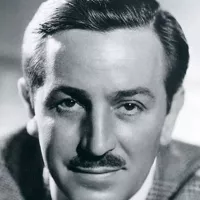
Walter Elias Disney was a highly influential American animator film...
CBS Broadcasting Inc CBS is a prominent American commercial broadcast...
California is a U S state on the Pacific Coast...
Trending
Snoqualmie Pass is a mountain pass in Washington State serving as a crucial route for Interstate I- through the Cascade...

6 months ago Lexie Hull Highlighted by Caitlin Clark and Sophie Cunningham in WNBA News.
6 months ago Thiago Silva's Fluminense Contract, Champions History, and Career Milestone Explored.
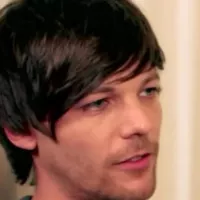
28 days ago Louis Tomlinson donates $9k to ex-bodyguard for surgery: a heartfelt gesture.

29 days ago Nate Bargatze Plans Nashville Theme Park; Team Negotiates Site Locations
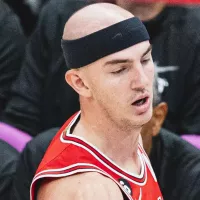
1 month ago Alex Caruso Praised as NBA's Best Defensive Disruptor; Wallace Observes Games
Popular

Candace Owens is an American conservative political commentator and author...
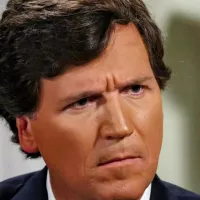
Tucker Carlson is an American conservative political commentator known for...

XXXTentacion born Jahseh Dwayne Ricardo Onfroy was a controversial yet...

Kashyap Pramod Patel is an American lawyer who became the...
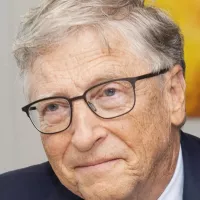
Bill Gates an American businessman and philanthropist revolutionized personal computing...

Ben Shapiro is a prominent American conservative political commentator media...
